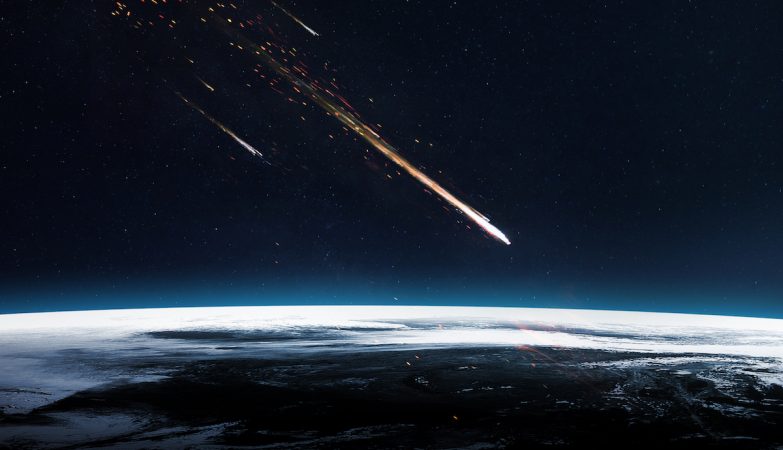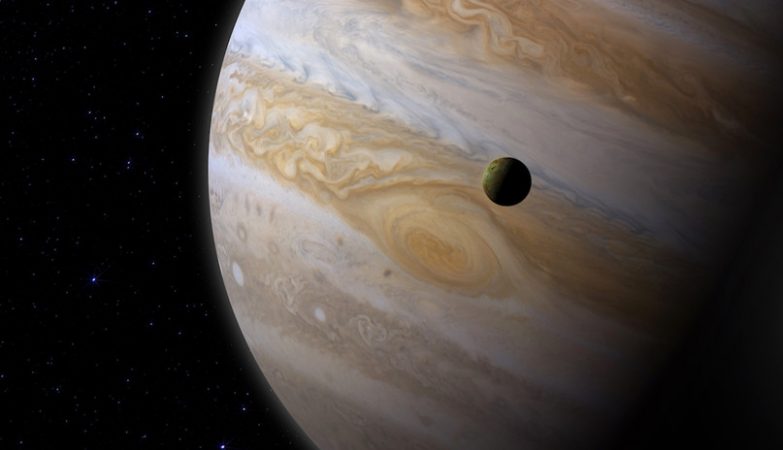Finalmente sabemos de onde veio a maioria dos meteoritos da Terra

Até agora, apenas uma pequena fração dos meteoritos que aterram na Terra tinha sido firmemente ligada ao seu corpo progenitor no espaço - mas um conjunto de novos estudos acaba de nos dar evidências convincentes da origem de mais de 90% dos meteoritos atuais.
Segundo o Science Alert, as análises anteriores de meteoritos que atingem o nosso planeta sugerem algum tipo de origem partilhada. São feitos de materiais muito semelhantes e foram cozidos por radiação cósmica durante um período de tempo suspeitosamente curto, sugerindo uma separação relativamente recente de corpos progenitores partilhados.
As equipas responsáveis por três novos artigos, publicados em setembro na Astronomy and Astrophysics [artigo 1], e em outubro na Nature [artigo 2, artigo 3] e utilizaram uma combinação de observações telescópicas muito detalhadas e simulações de modelos informáticos para comparar asteroides no espaço com meteoritos recuperados na Terra, fazendo corresponder os tipos de rocha e as trajetórias orbitais entre os dois.
Liderados por investigadores do Centro Nacional Francês de Investigação Científica, do Observatório Europeu do Sul e da Universidade Charles, na República Checa, os estudos centraram-se nos condritos H (alto teor de ferro) e L (baixo teor de ferro), o tipo mais comum, que representa cerca de 70% dos meteoritos.
São assim designados porque são constituídos por pequenas partículas chamadas côndrulos, causadas pelo arrefecimento rápido da rocha fundida.
Os investigadores determinaram que estes meteoritos condritos H e L chegaram ao nosso planeta vindos de três famílias de asteroides chamadas Massalia, Karin e Koronis, todas localizadas na cintura principal de asteroides entre Marte e Júpiter.
Uma equipa de estudo conseguiu também atribuir datas a colisões notáveis nestas famílias de asteroides, causando novas cascatas de rocha que acabariam por chegar à Terra.
Massalia sofreu colisões importantes há 466 milhões de anos e há 40 milhões de anos, enquanto as famílias Karin e Koronis sofreram colisões há cerca de 5,8 e 7,6 milhões de anos, respetivamente.
“As provas de apoio incluem a existência de bandas de poeira associadas, as idades de exposição aos raios cósmicos dos meteoritos de condrito H e a distribuição das órbitas pré-atmosféricas dos meteoritos”, escrevem os autores.
Isto significa que a maioria dos meteoritos que atingem a Terra atualmente provêm de menos grupos de asteroides do que seria de esperar - e também de eventos de colisão mais recentes. Esses eventos de colisão (relativamente) recentes explicam a aterragem dos meteoritos na era atual.
Segundo a equipa, isto é parcialmente explicado pelo ciclo de vida das famílias de asteroides. Os eventos de colisão vividos por estas famílias de asteroides conduzem a um grande número de fragmentos de asteroides mais pequenos, o que aumenta as suas hipóteses de novas colisões e de se libertarem da cintura de asteroides.
Os investigadores também analisaram outros meteoritos menos comuns para além dos condritos H e L, aumentando o número de meteoritos contabilizados para mais de 90%. Estes foram atribuídos a famílias de asteroides, incluindo Veritas, Polana e Eos.
in ZAP





